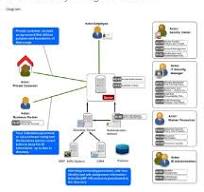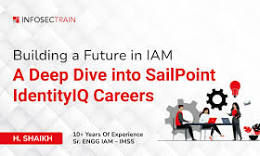The Importance of Access Management in Cyber Security
In today’s digital age, where data breaches and cyber attacks are on the rise, effective access management plays a crucial role in maintaining the security of an organisation’s IT infrastructure. Access management refers to the processes and technologies used to control and monitor user access to sensitive information, systems, and resources within an organisation.
Protecting Against Insider Threats
One of the key reasons why access management is essential for cyber security is its role in mitigating insider threats. Insider threats can be intentional or unintentional, but both pose significant risks to an organisation’s data security. By implementing access management controls such as role-based access control (RBAC) and least privilege principle, organisations can limit the potential damage that insiders can cause.
Preventing Unauthorized Access
Unauthorized access remains one of the primary entry points for cyber criminals looking to exploit vulnerabilities in an organisation’s network. Effective access management ensures that only authorised users have access to specific resources based on their roles and responsibilities. By implementing strong authentication mechanisms such as multi-factor authentication (MFA) and regular access reviews, organisations can significantly reduce the risk of unauthorised access.
Enhancing Compliance
Access management is also crucial for ensuring compliance with industry regulations and data protection laws. Many regulatory frameworks require organisations to implement strict controls over who can access sensitive data and how that access is monitored. By maintaining detailed audit logs and enforcing strong password policies, organisations can demonstrate compliance with regulatory requirements and protect themselves from potential fines or legal consequences.
Conclusion
In conclusion, access management is a fundamental component of a robust cyber security strategy. By implementing effective access controls, organisations can protect against insider threats, prevent unauthorised access, enhance compliance with regulations, and ultimately safeguard their valuable assets from cyber attacks. Investing in robust access management practices is essential for any organisation looking to strengthen its overall security posture in today’s increasingly complex threat landscape.
Top 8 Tips for Effective Access Management in Cyber Security
- Implement strong password policies
- Use multi-factor authentication for added security
- Regularly review and update user access permissions
- Monitor user activity for any unusual behaviour
- Limit access to sensitive data on a need-to-know basis
- Train employees on best practices for access management
- Utilise encryption to protect data in transit and at rest
- Implement regular security audits and assessments
Implement strong password policies
Implementing strong password policies is a fundamental step in enhancing access management cyber security. By requiring employees to create complex passwords that include a mix of letters, numbers, and special characters, organisations can significantly reduce the risk of password-related breaches. Strong passwords act as a first line of defence against unauthorised access and help protect sensitive data from malicious actors. Regularly updating passwords and enforcing password expiration policies further strengthens security measures, ensuring that only authorised users have access to critical systems and information.
Use multi-factor authentication for added security
Utilising multi-factor authentication is a highly effective tip in enhancing access management cyber security. By requiring users to provide multiple forms of verification before granting access, such as a password combined with a unique code sent to their mobile device, organisations can significantly bolster their defences against unauthorised access attempts. Multi-factor authentication adds an extra layer of security that makes it more difficult for cyber criminals to compromise accounts, even if passwords are compromised. This simple yet powerful security measure can greatly reduce the risk of data breaches and protect sensitive information from falling into the wrong hands.
Regularly review and update user access permissions
Regularly reviewing and updating user access permissions is a critical tip in access management cyber security. By conducting periodic audits of user permissions, organisations can ensure that employees have the appropriate level of access needed to perform their roles effectively, while also reducing the risk of unauthorised access. Updating access permissions in a timely manner based on changes in job roles or responsibilities can help prevent insider threats and maintain the integrity of the organisation’s data security. This proactive approach to managing user access not only enhances overall security posture but also demonstrates a commitment to compliance with regulatory requirements.
Monitor user activity for any unusual behaviour
Monitoring user activity for any unusual behaviour is a critical tip in access management cyber security. By keeping a close eye on how users interact with the system and identifying deviations from normal patterns, organisations can detect potential security threats early on. Unusual behaviour could indicate a compromised account, insider threat, or malicious activity. By implementing robust monitoring mechanisms and leveraging advanced analytics tools, organisations can proactively respond to suspicious activities, mitigate risks, and strengthen their overall cyber security posture.
Limit access to sensitive data on a need-to-know basis
Limiting access to sensitive data on a need-to-know basis is a fundamental principle in access management cyber security. By restricting access to only those individuals who require the information to perform their job roles, organisations can significantly reduce the risk of data breaches and insider threats. This approach ensures that sensitive data remains protected and minimises the potential impact of a security incident. Implementing strict access controls based on the principle of least privilege helps organisations maintain a strong security posture and enhances overall data protection measures.
Train employees on best practices for access management
Training employees on best practices for access management is a crucial step in enhancing cyber security within an organisation. By educating staff on the importance of strong password management, the risks of sharing login credentials, and the significance of promptly reporting any suspicious activity, companies can empower their workforce to become proactive defenders against potential security threats. Through regular training sessions and awareness campaigns, employees can develop a heightened sense of responsibility towards safeguarding sensitive data and contribute to creating a culture of security awareness throughout the organisation.
Utilise encryption to protect data in transit and at rest
Utilising encryption is a critical tip in access management cyber security to safeguard data both in transit and at rest. Encryption technology ensures that sensitive information is encoded in such a way that only authorised parties with the appropriate decryption key can access it. Encrypting data in transit protects it as it moves between devices or across networks, preventing interception by cyber criminals. Similarly, encrypting data at rest on storage devices or servers adds an extra layer of security, making it unreadable to unauthorised individuals even if the physical device is compromised. By incorporating encryption into access management practices, organisations can significantly enhance the protection of their data assets against potential breaches and unauthorised access attempts.
Implement regular security audits and assessments
Implementing regular security audits and assessments is a crucial tip in access management cyber security. By conducting frequent audits, organisations can proactively identify vulnerabilities, assess the effectiveness of existing access controls, and detect any suspicious activities that may indicate a potential security breach. These audits provide valuable insights into the overall security posture of the organisation’s IT infrastructure, allowing for timely remediation of any weaknesses and ensuring that access management policies are robust and up to date. Regular assessments help in maintaining compliance with industry regulations and best practices, ultimately strengthening the organisation’s defence against cyber threats.




